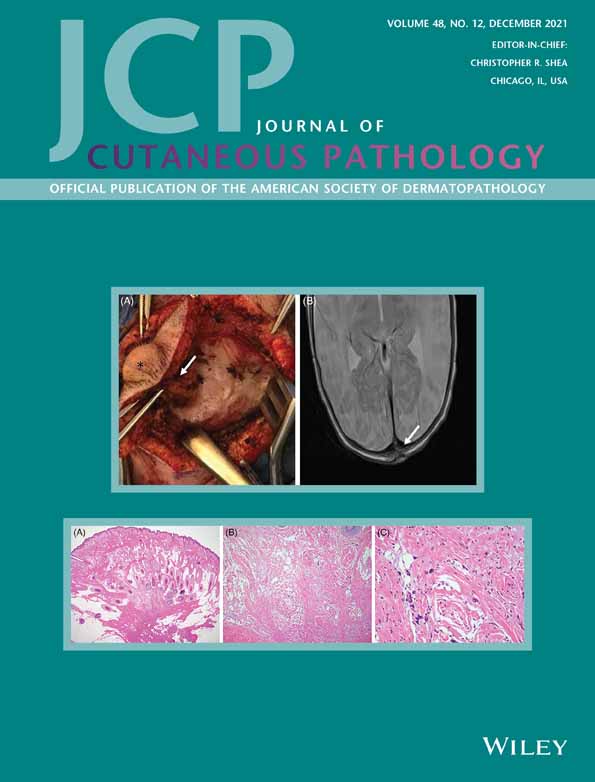The significance of epidermal involvement in primary cutaneous gamma/delta (γδ) T-cell lymphoma: A systematic review and meta-analysis
IRB statement: This study was IRB exempt.
Abstract
Background
Primary cutaneous gamma/delta (γδ) T-cell lymphoma (PCGDTCL) is a rare, aggressive peripheral T-cell lymphoma. There is evidence that patients with epidermotropic PCGDTCL may have an improved prognosis compared with those with only dermal and/or subcutaneous involvement.
Methods
Systematic review of the literature and application of inclusion criteria yielded 48 manuscripts detailing the cases of 104 patients.
Results
Of the 104 patients, 57 were male (51.4%) and 47 were female (48.5%) Based on provided histopathologic descriptions, 57 cases (54.8%) had no epidermotropism, 47 cases (45.2%) patients demonstrated any degree of epidermotropism, and 25 cases were predominantly epidermotropic (25/104, 24%). Five-year overall survivals for patients with no epidermotropism, any epidermotropism, and predominantly epidermotropic presentation were 32.8%, 28.9%, and 40.0%, respectively (p = 0.40). The most commonly performed immunohistochemical markers were CD3, CD4, CD8, CD5, CD7, CD30, CD56, TCR beta, TCR γ, and TCR δ. There was no statistically significant difference in immunophenotype between groups. Lesion morphology was described in the majority of cases (85/104, 80.9%); most cases presented as a combination of nodules, plaques, and tumors (77.4%). Several cases had more atypical presentations, including “mycosis-fungoides-like” and ulcerated.
Conclusion
In PCGDTCL, neither epidermotropism nor predominantly epidermotropic phenotype predict a better prognosis. In addition, the case report literature in dermatology and dermatopathology is rich and highly valuable.
CONFLICT OF INTEREST
The authors report no conflicts of interest.
Open Research
DATA AVAILABILITY STATEMENT
The data that support the findings of this study are available from the corresponding author upon reasonable request.




